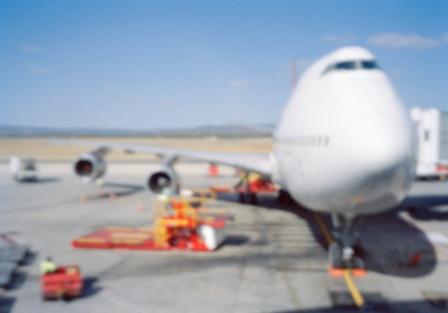

Printable PDF version
Subscribe to our newsletter
Market Soaring … or Stalling
The Greening of Aviation
Terminal Developments
Construction
Management Specialists
111 Pine Street, Suite 1315
San Francisco, CA 94111
(415) 981-9430 (San Francisco office)
6517 Lakeview Drive
Falls Church, VA 22041
(703) 609-7494 (Washington, DC office)
4361 35th Street
San Diego, CA 92104
(619) 550-1187 (San Diego office)
8538 173rd Avenue NE
Redmond, WA 98052
(206) 571-0128 (Seattle office)
www.TBDconsultants.com
For this newsletter we are focusing on the aviation industry, and in this article we draw some comparisons between the way the aviation market and the general market is moving, as we try to learn to fly again and rise out of the Great Recession.
A study in New Scientist magazine in December 2009 reported on how the cost of climate change policies would affect consumers in the UK. Apart from electricity and other fuel costs, cost impacts ranged from 0% to 2%, with one major exception. That exception was the aviation industry, where a 140% increase in the cost of air travel was predicted over the four decade period the study used. That is because there is currently no real low-carbon alternative fuel available, so airlines are expected to have a high ‘carbon tax’ to pay.

But alternative fuels are being studied, and the following are some options:
- Synthetic fuel, made from coal, natural gas, etc., is an alternative to oil-based fuels that could easily be implemented with modern-day aircraft, and would avoid the cost fluctuations of oil, but does little for the climate and is still using non-renewable resources (even though they are more plentiful than oil).
- Biofuels, derived ideally from food waste or algae, can be mixed in small percentages with jet fuel in some aircraft, and new developments in biofuels are leading to it being a direct alternative for jet fuel. Of course, we don’t want to be cutting down rain forests to grow the crops to make biofuels. There are also problems with the temperature biofuels freeze at, and the cost of producing it.
- Liquid hydrogen only produces water as a by-product when burnt as a fuel, so it is extremely clean, but the requirements for storing it makes its use in aircraft unlikely, at least in the reasonably short term. There is also the question of whether the water residue would add to cloud creation, and compound the climate effects that contrails already generate. Along with biofuels, hydrogen is more likely to find a use in ground vehicles than in aircraft in the foreseeable future.
- Aircraft can fly above the clouds, so how about powering them with solar energy? While prototype craft have used this power source, its use in commercial aircraft does not seem practical.
The Commercial Aviation Alternative Fuels Initiative (CAAFI) is a coalition working to promote the development of alternative aviation fuels, but their timeline is realistically measured in decades. In the short run, reducing the amount of fuel that aircraft waste is likely to contribute more for the climate’s benefit.

Air traffic controllers have not been asleep when it comes to making aircrafts’ flights more fuel-efficient. Traditionally the aim was to get aircraft leaving on time, then if traffic built up at the destination airport the aircraft would get stacked, flying in circles until a landing slot was available, but wasting a lot of fuel in the process. A new procedure is being introduced whereby the scheduling of flight landings reaches back to the departing airport, and aircraft are held on the ground until it is likely that the aircraft will be able to land directly on arrival. Of course that plan might be frustrated by changing weather conditions, and the implementation of such a system requires air traffic control equipment that can handle the planning and processing.
You have probably sat in an aircraft as it waited in a queue for its turn to reach the runway and take off. This is another time that aircraft are wasting fuel, and better planning of aircraft departures from the gate is another procedure, along with things like single-engine taxiing and limiting the use of reverse-thrust on landing, that can reduce the carbon-footprint at airports.
Aircraft design is also evolving to improve efficiency and reduce fuel use including the use of propfan technology (giving more thrust for the same fuel usage), composite structures (reducing weight – think Boeing 787 Dreamliner, but forget the delays), new airfoil concepts (improving efficiency), boundary layer control (increasing performance and control), and active controls (increasing performance). There are also more revolutionary ideas to improve efficiency, such as the use of flying wing aircraft, but we will wait and see if these long-discussed concepts finally get implemented.
The use of alternative fuels for ground vehicles, such as maintenance vehicles, shuttle buses, etc., has already been mentioned. Plus, just about every aspect of green building technology can be applied to airport structures, just as they do to other building types.
In this article we look at some of the forces driving changes in airport design in general and terminal design in particular.
Design consultant: Katie Levine of Vallance, Inc.